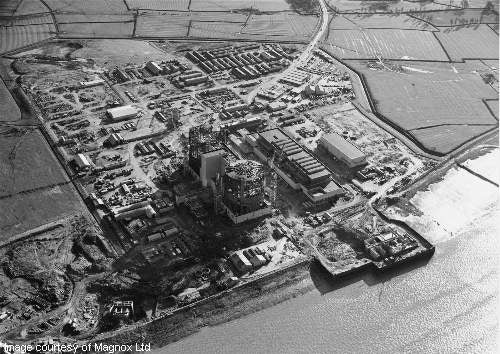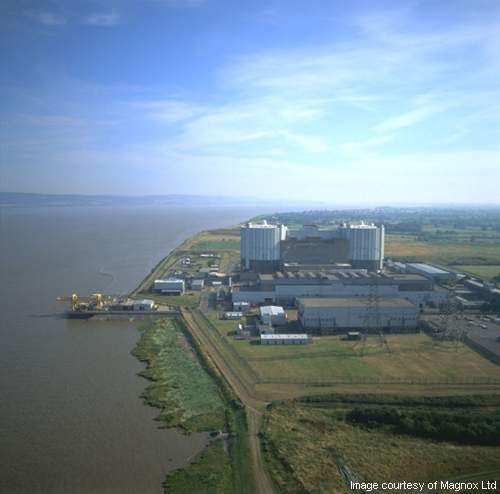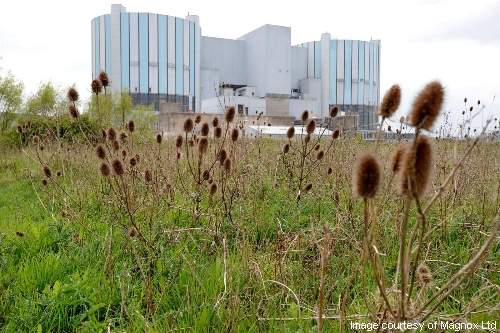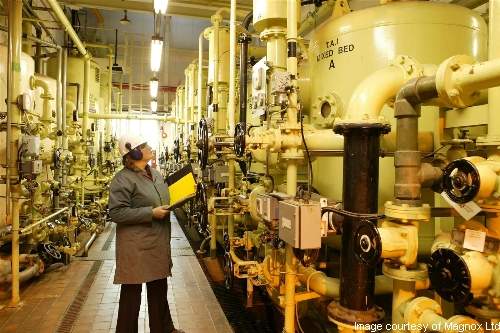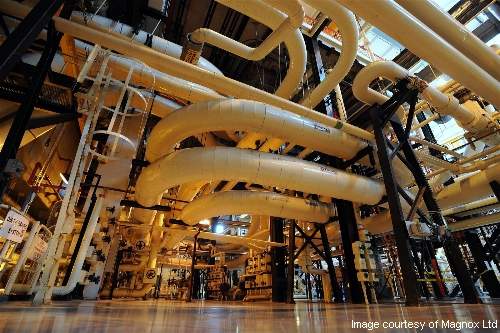Oldbury Power Station, a 434MW, twin nuclear reactor station, was decommissioned in 2012. At the time it was the world’s oldest operating nuclear power reactor and the UK’s first nuclear power station to use pre-stressed concrete pressure vessels instead of steel.
The plant entered service in 1967. Magnox Electric was the licensee and was responsible for the day-to-day management and operations of the power station. The plant is owned by Nuclear Decommissioning Authority (NDA) and was built on a 175 acres site located on the south bank of the River Severn in South Gloucestershire. The nearest village / town, Oldbury-on-Severn, Bristol, is located 24km away from the power station which has been specified as a Site of Special Scientific Interest (SSSI) and a Special Protection Area.
Decommissioning the UK’s first nuclear power station
The plant was originally scheduled to be decommissioned by 30 December 2008,but Reactor Two was extended for two and a half years, while the life of Reactor One was extended for four years. Reactor Two was finally decommissioned in June 2011, after 43 years of operations. Reactor One was shutdown in February 2012. The plant generated over 137.5TWh of electricity during its lifetime.
The Oldbury Nuclear Power Station decommissioning project was estimated to cost £954m and is expected to take approximately 90 years to attain final site clearance. Defueling of the reactors is expected to be completed by 2016. Care and maintenance preparations will start in 2015 and are expected to end in 2027.
All the spent fuel retrieved from the reactors will be transported in flasks to Sellafield for reprocessing through the Cooling Pond. Reprocessing will remove more than 99% of the entire radioactive content.
Oldbury power plant history
The consent for the construction of Oldbury Power Station was given by the Minister for Power in 1960. Construction commenced one year later in 1961. The first electricity from Reactor One was produced in November 1967.
Reactor Two began production in April 1968. The station was officially opened in June 1969 by the then Minister of Technology, Anthony Wedgwood-Benn.
Buildings of the main power station were constructed by a consortium, The Nuclear Power Group (TNPG). Most of the remaining buildings were constructed by Sir Lindsay Parkinson & Co. (acquired by Fairclough Construction Group in 1974). TNPG also supplied the reactors. Associated Electrical Industries and C.A. Parsons and Company supplied the turbines. Alfred McAlpine, acquired by Carillion in 2008, was the main civil engineering contractor.
Oldbury nuclear power plant details and specifications
Oldbury Power Station was originally designed for 600MW of electrical output. The operating gas temperature had to be reduced soon after the start of operations due to steel corrosion problems caused by the hot CO2 coolant within the reactor.
The net output came down to 400MW, as a result. It was brought up to 416MW in 1975 after making alterations in the main steam turbines. The net output increased to 434MW by making improvements to thermodynamic efficiency in 1982. The output was increased further to 452MW after installation of new HP turbine modules.
The plant used two CO2 cooled, graphite-moderated Magnox reactors which were originally fuelled with natural uranium. Enriched uranium was introduced in August 1998. The plant had two turbo generators.
The number of fuel channels per reactor was 3,308 and there were eight fuel elements per channel. Natural and enriched uranium were the fuels. Cooling water for the reactor was supplied from the River Severn. The plant was served by 480 employees when it was operational.
The number of fuel channels per reactor was 3,308 and there were eight fuel elements per channel. Natural and enriched uranium were the fuels. Cooling water for the reactor was supplied from the River Severn. The plant was served by 480 employees when it was operational.
Future nuclear power station plans
Hitachi acquired Horizon Nuclear Power (Horizon) from E.ON and RWE in November 2012 Hitachi plans to set up a nuclear power station adjacent to the existing power station.
Babcock International and Rolls Royce will plan and deliver the programme as part of a Memorandum of Understanding (MoU) signed with Hitachi. Two to three reactors will be built at each of Horizon’s sites at Wylfa, Anglesey and Oldbury, Gloucestershire, as part of the programme.
Jacobs Engineering Group, in a strategic partnership with AMEC, Atkins and Cavendish Nuclear, will prepare the Oldbury site for constructing the new power station and other associated developments as part of a contract awarded in December 2013.
The proposed Oldbury project is estimated to cost £20bn and is expected to generate up to 3,900MW of low-carbon electricity creating approximately 6,000 jobs during construction and over 1,000 jobs during operation.

